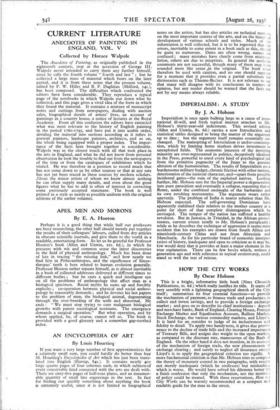ANECDOTES OF PAINTING IN ENGLAND, VOL. V
CURRENT LITERATURE
Collected by Horace Walpole
The Anecdotes of Painting, as originally published in the eighteenth century, stop at the accession of George III. Walpole never intended to carry them any further himself, since he calls the fourth volume fourth and last "' but he collected a large mass of material which bears on the later period, and it is from these notes that the present volume, edited by F. W. Mlles and B. P. Daghlian (Milford, 14s.), has been composed. The difficulties which confronted the editors have been considerable. They reproduce, a typical page of the notebooks in which Walpole put down what he collected, and this page gives a vivid idea of the form in which they found the material. It contains a mixture of manuscript notes and cuttings from newspapers, dealing with auction sales, biographical details of artists'_ lives, an account of paintings in a country house, a notice of lectures at the Royal Academy. From all this confusion the editors have extracted what was most relevant to the history of English painting in the period 176o-1795, and have put it into usable order, dividing the material into sections according as it refers to portrait painters, landscape painters, architects, and so on, the whole being equipped with a proper index. The impor- tance of the facts here brought together is considerable. Walpole was in the closest touch with all that took place in the arts in England, and what he did not know from personal observation he took the trouble to find out from the newspapers of the time or from the catalogues of exhibitions which he visited. He was therefore in a position to record much that has not come down to us by other sources or that at any rate has not yet been traced in these sources by modern scholars. About the minor artists of whom we know almost nothing he can often supply many details, and even about the great figures what he has to add is often of interest in correcting some previously accepted statement. The book is well printed in a style as nearly as possible uniform with the original editions of the earlier volumes.


































 Previous page
Previous page